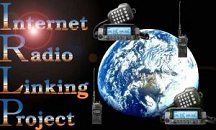IRLP Node 7652
PiRLP Node 7652 is operated by the Iowa Ten Meter Group (ITMG). The current PiRLP (a Raspberry Pi 2) owes its existence to KD0CST (JP) Fraas and Jim Groenke - KR6WP. The original PC node was a donation by JP who donated the computer,
IRLP software/hardware, radio and antenna in 2013 to ITMG. In its original and current state it is the only Node, in-the-world, that is listed active (24Mar2014) that is attached to a Ten
Meter Repeater.
PiRLP Node 7652 currently resides at an ITMG members QTH and operates thanks to their donation of electricity and internet.
Anyone is welcome to use Node 7652, through the Ten Meter repeater, subject to FCC rules and ITMG’s Guidelines. (Listed below)
What is IRLP
Internet Radio Linking Project, also known as IRLP, allows hams using radios to link a local IRLP node to other nodes or reflectors, around the world, through Voice-Over-IP (VoIP) on the Internet. This is accomplished with the help of a large network of dedicated servers and nodes. IRLP connections are of two types: node to node and node to reflector.
Nodes
Each node consists of a dedicated computer running Linux OS and custom software that is connected to both a radio and the Internet. This forms what is known as an IRLP Node.
Reflectors
Reflectors allow hams wishing to communicate with 3 or more nodes at the same time to connect to what is called an IRLP Reflector. Reflectors are a type of conferencing system. They are computers, connected to the Internet, running specialized software to allow multiple nodes to connect, talk and listen to each other.
How it works
Ham operators, through a local node, use DMTF tones transmitted through their radios to initiate a node-to-node or node-to-reflector connection anywhere in the world. A searchable list of all nodes and reflectors worldwide (including their current status) is available at: http://status.irlp.net/
Think of node-to-node connections as in making a phone call; it is between two parties (nodes). Anyone communicating, through a radio (an audio stream) on one side, is heard by all on both sides.Node-to-reflector connections could be considered a ‘party line’ or ‘3 way or more’ calling. Anyone communicating, through a radio, (an audio stream) on the node connected to the reflector will be heard by all other nodes connected to that reflector.
History
The brain child of David Cameron, VE7LTD; Cameron installed the first three IRLP nodes in late 1997 in an attempt to use the internet to link radio systems across Canada. It consisted of the Windows operating system with VocalTec’s iPhone installed. Due to different problems, the system was shut down in the spring of 1998 and Cameron rebuilt the system by using a Linux OS, a modified existing voice over IP software and his own interface board to connect the radio to the computer. This created a nearly seamless radio link between two remote sites, through the internet, that works so well that many people do not believe they are talking through a link at all.
(Please see http://irlp.net/ for more and all details pertaining to IRLP)
ITMG IRLP Operating Guidelines
Under Construction. Check back soon.